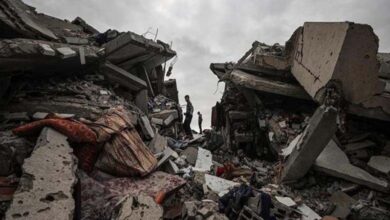Egypt Bets on Ancient Finds to tug Tourism out of Pandemic

Workers dig and ferry wheelbarrows laden with sand to open a replacement shaft at a bustling archaeological site outside of Cairo, while a couple of Egyptian archaeologists supervise from garden chairs. The dig is at the foot of the Step Pyramid of Djoser, arguably the world’s oldest pyramid, and is one among many recent excavations that are yielding troves of ancient artifacts from the country’s largest archaeological site.
As some European countries re-open to international tourists, Egypt has already been trying for months to draw in them to its archaeological sites and museums. Officials are betting that the new ancient discoveries will set it apart on the mid- and post-pandemic tourism market. they have visitors to return back effective to inject cash into the tourism industry, a pillar of the economy.
But like countries elsewhere, Egypt continues to battle the coronavirus. In early May, the govt announced that 1 million people had been vaccinated, though that number is believed to be higher now.
In the meantime, authorities have kept the publicity machine running, focused on the new discoveries.
In November, archaeologists announced the invention of in any case 100 ancient coffins dating back to the Pharaonic Late Period and Greco-Ptolemaic era, together with 40 gilded statues found 2,500 years after they were first buried. That came a month after the invention of 57 other coffins at an equivalent site, the necropolis of Saqqara that has the step pyramid.
“Saqqara may be a treasure,” said Tourism and Antiquities Minister Khaled el-Anany while announcing the November discovery, estimating that just one of what the location contains has been unearthed thus far .
“Our problem now’s that we don’t skills we will possibly wow the planet after this,” he said.
If they don’t, it certainly won’t be for lack of trying.
In April, Zahi Hawass, Egypt’s best-known archaeologist, announced the invention of a 3,000-year-old lost city in southern Luxor, complete with mud brick houses, artifacts and tools from pharaonic times. It dates back to Amenhotep III of the 18th dynasty, whose reign (1390–1353 B.C.) is taken into account a golden era for ancient Egypt.
That discovery was followed by a made-for-TV parade celebrating the transport of twenty-two of the country’s prized royal mummies from central Cairo to their new resting place during a massive facility farther south within the capital, the National Museum of Egyptian Civilization.
The Red Sea resort of Sharm el-Sheikh is now home to an archaeological museum, as is Cairo’s International Airport, both opened in recent months. And officials have also said they still decide to open the huge new Grand Egyptian Museum next to the Giza Pyramids by January, after years of delays. Entrance fees for archeological sites are lowered, as has the value of tourist visas.
At the newly opened National Museum of Egyptian Civilization, Mahmoud el-Rays, a guide , was leading alittle group of European tourists at the hall housing the royal mummies.
“2019 was an incredible year,” he said. “But corona reversed everything. it’s an enormous blow.”
Tourism traffic strengthened within the first months of 2021, el-Anany, the minister, told The Associated Press during a recent interview, though he didn’t give specific figures. He was optimistic that more would still come year-round.
“Egypt may be a perfect destination for post-COVID therein our tourism is basically an open-air tourism,” he said.
It has recorded a complete of 14,950 deaths from the virus and remains seeing quite thousand new cases daily. Like other countries, the important numbers are believed to be much higher.
Egypt also had a trying experience early within the pandemic, when it saw a coronavirus outbreak on one among its Nile cruise boats. It first closed its borders completely until the summer of 2020, but later welcomed tourists back, first to Red-Sea resort towns and now to the guts of the country — Cairo and therefore the Nile Valley that hosts most of its famous archaeological sites. Visitors still require a negative COVID-19 test result to enter the country.
In a further cause for optimism, Russia said in April that it plans to resume direct flights to Egypt’s Red Sea resort towns. Moscow stopped the flights after a Russian airliner crashed over the Sinai in October 2015, killing all on board.
Amanda, a 36-year-old engineer from Austria, returned to Egypt in May. it had been her second visit in four years. She visited the Egyptian Museum, the National Museum of Egyptian Civilization and Islamic Cairo, within the capital’s historic center.
She had planned to return last year, but the pandemic interfered.
“Once they opened, I came,” she said. “It was my dream to ascertain the Pyramids again.”
El-Rays, the guide , says that while he’s seeing tourists beginning to are available larger numbers, he knows a full recovery won’t happen overnight.
“It will take a while to return to before corona,” he said.












